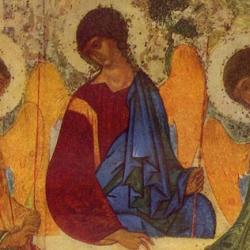David leads the ark procession into Jerusalem wearing a linen ephod (1 Samuel 6). He offers sacrifices after every six paces, gets the ark into a tent, and when it’s all done he blesses the people. He functions in this rite as a royal priest, the chief “layman” in Israel.
It’s significant that he wears a linen ephod. Israel’s high priests were normally dressed in garments made from a holy mixture of wool, linen, and gold thread. Only on the day of atonement did they remove these clothes and enter the Lord’s presence in linen (Leviticus 16).
David’s actions and clothing suggest that the ark installation is somehow analogous to the day of atonement. By the installation of the ark, Yahweh comes to dwell in Jerusalem, just as the actions of yom kippur removed offensive pollutions that might have driven Yahweh from His place.
We can reason in the other direction too, and suggests a perspective on the day of atonement. The seventh month began with the blowing of trumpets announcing the Lord’s coming. On the tenth day, the high priest cleansed the most holy place wearing a linen robe. A few days later, Israel launched the feast of booths. Within this sequence, the day of atonement is a purification of the throne, a rite ensuring that Yahweh will remain where Israel wants Him to be – enthroned above the cherubim.
This helps to explain why the rites of the day of atonement are focused on the kapporet, the golden lid of the ark where the blood of the goat is sprinkled. That lid is Yahweh’s footstool, the place where His feet rest when He sits enthroned above the cherubim. By cleansing the footstool, the rites of atonement ensure that His feet will stay there, resting and ruling in the midst of Israel, rather than striding away to another, cleaner home.
The day of atonement, in short, was an annual re-enthronement rite.











